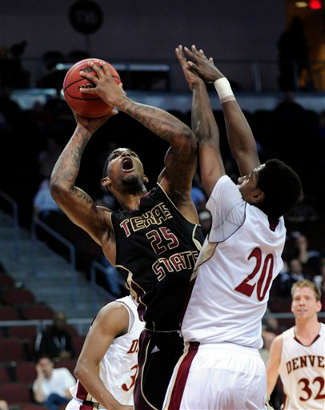Texas State Bobcats (3-6) at Texas Longhorns (8-1)
Frank Erwin Center | Austin, TX | Tip: 7 P.M. | TV: Longhorn Network
The Texas Longhorns are back in action tonight at the Erwin Center, hosting Texas State in a game that has all the ingredients for a letdown performance. The Horns are coming off of a thrilling overtime win at Temple last Saturday, in which Javan Felix hit a clutch three with just seconds left to earn the win. Since then, the players have had a week off to deal with final exams, and now face a Bobcat team that should have no chance for an upset. With massive tests against North Carolina and Michigan State looming in the next week, it wouldn’t be a huge surprise to see a lackluster effort from the Horns tonight.
By the numbers
Texas State comes in sporting a disappointing 3-6 mark, with one of those wins coming on Wednesday against Division II foe Cedarville. The Bobcats are in the midst of a major culture change under new coach Danny Kaspar, who was famous for stifling defense at Stephen F. Austin. Texas State, on the other hand, was practically allergic to defense under old coach Doug Davalos, and the team always played at a breakneck pace. The Bobcats finished in the top seven of Ken Pomeroy’s adjusted tempo rankings in each of Coach Davalos’ seven seasons. This year, Texas State is ranked 314th out of 351 Division I teams in that department.
It’s going to be a long process for Kaspar to get the Texas State program to the level at which he had the Lumberjacks. Through the first nine games of his tenure, the Bobcats are in the bottom third of D-I hoops in both adjusted offensive and adjusted defensive efficiency. They are seventh-worst in the nation at defending the three-point line, with opponents hitting more than 43% of their attempts. On the offensive end, they turn it over roughly once in every five possessions, and rarely manage to get to the free-throw line. Earning just three trips for every ten field-goal attempts ranks Texas State as the 31st-worst D-I team in free-throw rate.
Meet the Bobcats

Joel Wright is the go-to guy for Texas State
(Photo credit: David Becker/Associated Press) |


